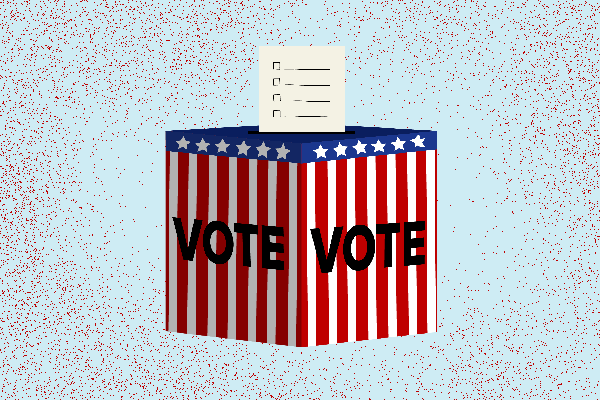Trump vs. Biden: How the 2020 Election Results Will Affect the Stock Market
Money is not a client of any investment adviser featured on this page. The information provided on this page is for educational purposes only and is not intended as investment advice. Money does not offer advisory services.

Many things are riding on the outcome of the Nov. 3 election. But your investment portfolio probably isn’t one of them.
With issues from health care to tax policy up in the air — and uncertainty around when we’ll even know who the next president is, it’s understandable to be uneasy about what this all means for your money. Investors might be feeling particularly jittery after Wednesday's stock market route, when the Dow lost 3.4% and the S&P 500 fell 3.5% in both indices' worst day since June.
But experts say whether a Democrat or Republican takes the oath of office on Inauguration Day actually won’t have too much of an impact on how your investments do over time.
“For long-term investors, elections mean minimal, if anything at all,” says Brian Walsh, Jr., financial planner at Walsh & Nicholson Financial Group.
What history tells us
Politics tend to get too much credit and too much blame for stock market performance, Walsh says. According to research from investment company Vanguard looking all the way back to 1853, equity returns are almost identical no matter who is in the Oval Office. The average annual U.S. stock market returns between 1853 and 2015 were 10.7% when a Democrat was president and 10.5% when it was a Republican. And there is very little impact on fixed income investments, like bonds, too, Vanguard noted.
"The stock market tends to operate on its own cadence and own whims,” says Adam Grealish, director of Investing at Betterment.
And while there can often be volatility during an election year as investors scramble to figure out which candidate will do what, years where people head to the ballot boxes usually turn out well for investors. Charles Schwab found that since 1928, the S&P 500 Index has ended on a positive note 74% of the time (17 out of the past 23 presidential election years) with an average annual return of 7.1%.
“Election years are more bark than they are bite,” Walsh says.
The volatility you see in election years is mostly mom-and-pop investors being more concerned than they need to be, he adds.
What drives market moves
So why doesn’t the outcome of the presidential election have more of an impact on the market?
What drives stock market returns is very complicated and not one-dimensional, Grealish says. (Did you think the market would reach new highs in the middle of a global pandemic? Probably not.)
From corporate profits, to trade and globalization, to investor sentiment, Wall Street has many factors to watch aside from who the president is and whether the House and Senate go red or blue.
But even when dialing in on the presidential candidates themselves, there are multiple details to consider. While a lot of investors are focused on what a Biden presidency could mean for tax policy, other factors could offset any changes there, like government stimulus or who he appoints as the next Fed chairman, Grealish says.
What you can do
In short: don’t overthink what changes election night could bring to your investment portfolio.
But there are other concerns that investors might want to consider like the continued virus cases and the amount of debt the U.S. government is taking on. Walsh recommends allocating some of your portfolio to securities that will protect against inflation, like real estate, gold and Treasury-inflation protected securities. This might look like having 80% of a portfolio in a core holding of diversified funds, then allocating the rest to these inflation hedges or other tactical strategies to take advantage of the current environment.
Walsh says as you get closer to retirement, the percentage you allocate to these inflation-linked or tactical securities doesn’t necessarily have to change — but of course revisit how much of that 80% is allocated to stocks versus relatively safer options like bonds.
Overall, it’s important to stick with the basics: rebalance routinely and diversify. Review your asset allocation — which should be based on your age, specific financial situation and overall investment goals — and make sure it’s in line with the amount of risk you’re willing to take. Many financial planners recommend subtracting your age from 110 or 120 to find the percentage of your portfolio that should be in stocks (the rest can be in fixed income options like bonds), Money reported earlier this year. When that asset allocation strays from your target, rebalance, meaning buy and sell the different assets in your portfolio to get you back to your desired weighting.
That way, you won’t have to stress the market ups and downs that we’ll likely continue to see throughout this pandemic, no matter who the next president is.
More from Money:
What Will Happen to the Stock Market if There's No Clear Winner on Election Night?
The Top-Performing Stock of the Trump Era Is a Green Energy Company (Yes, Really)
